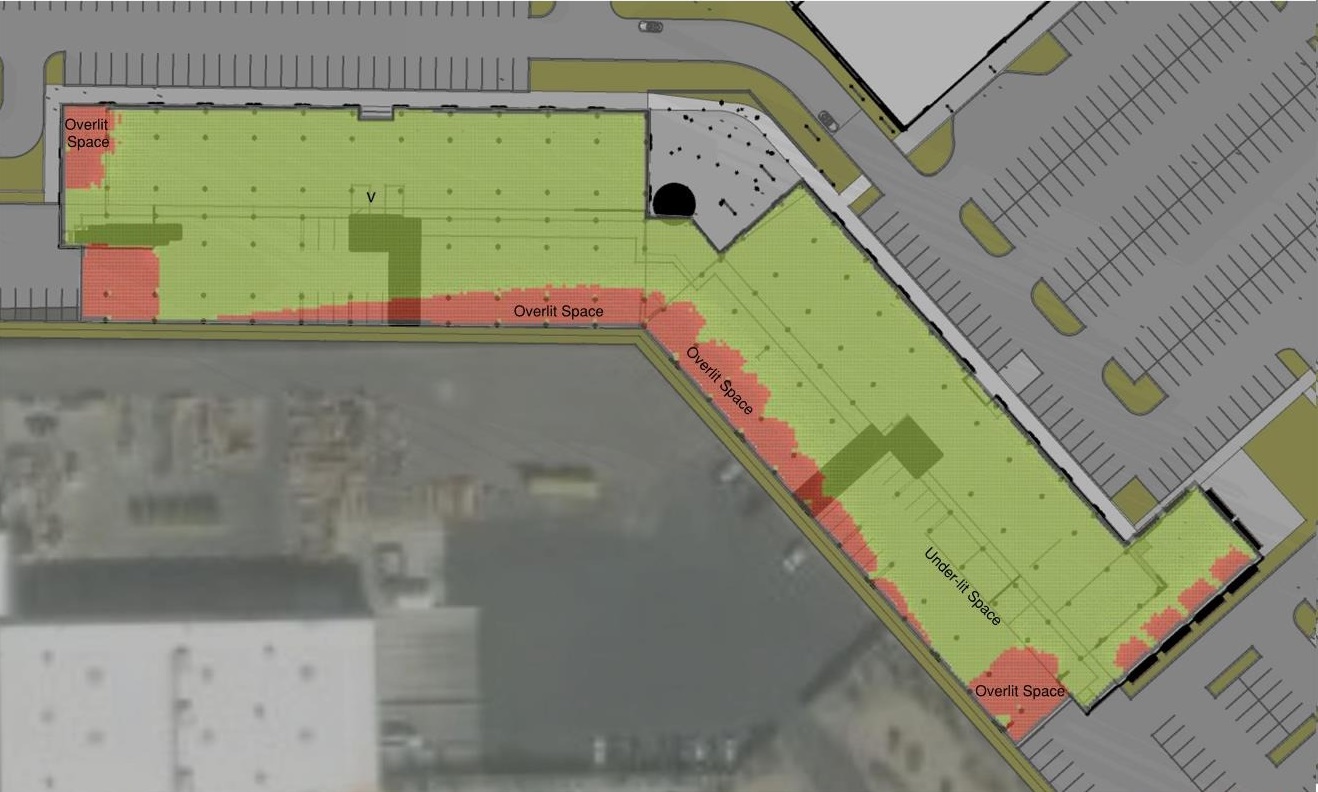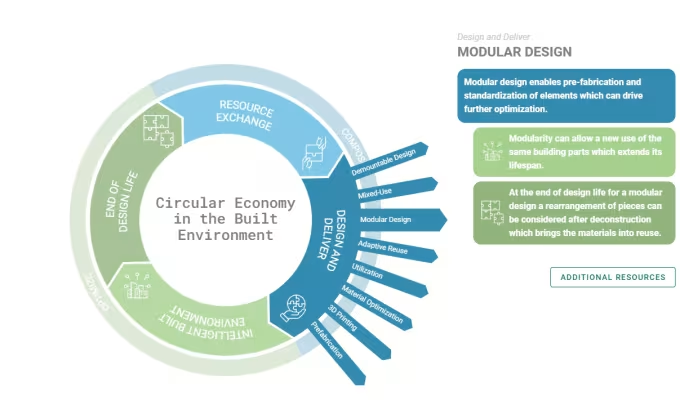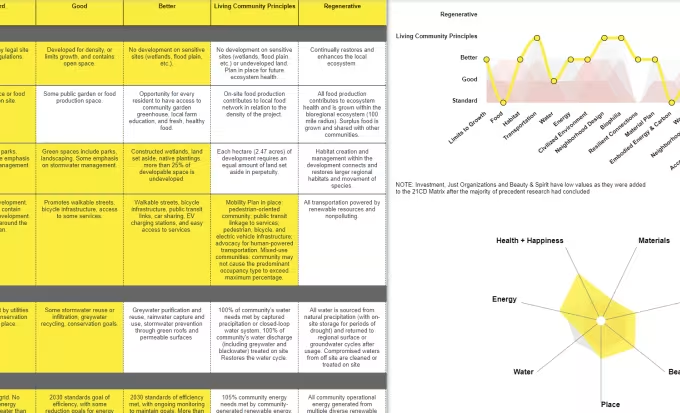Research in Practice: Regenerative Design

Cuningham has dedicated staff who analyze and push our designs to encourage and develop goals related to energy and water use, embodied carbon, equity impacts, resiliency, and environmental impact. Additionally, we work to stay up to date on emerging regenerative design trends, contributing to the conversation around how they can be implemented in the design of the built environment.
Cuningham is committed to increasing the performance of the buildings we design and uses several tools and methodologies for analyzing our work to push for greater energy efficiency, daylighting, and comfort. Our regenerative design group works with project teams to evaluate their projects at key stages in the design process based on target performance criteria and helps them meet their goals.

We have recently invested in understanding the principles of the Circular Economy and exploring ways these can be applied to our design work. One of the outcomes of this effort was a toolkit we can use to educate our designers and clients about the design opportunities of the circular economy at different points in a project’s lifecycle.

Cunningham also collaborated with the AIA Minnesota and a few other partner firms to analyze local projects based on the 21st Century Development Framework. One of the products of this effort was a web-based tool that our teams could use to quickly score and compare projects. This tool allowed us to synthesize and simplify the methodology used during the research effort, making it accessible to anyone who was interested in implementing it on their own projects.